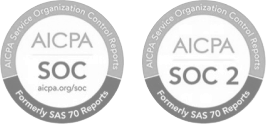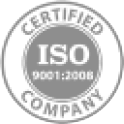HCM – Human Capital Management
Article Navigation
Human Capital Management at Mercans delivers a comprehensive, technology-driven approach to managing and optimising global workforces through advanced HR, payroll, and talent management solutions. Mercans’ HCM platform empowers organisations to attract, develop, and retain top talent while enhancing employee engagement, productivity, and compliance across multiple countries. By integrating recruitment, onboarding, performance management, compensation, and workforce analytics into a single cloud-based system, Mercans enables data-driven decision-making and real-time visibility into every aspect of human capital. With powerful automation, AI insights, and predictive analytics, businesses can align their people strategies with organisational goals and drive measurable results. Trusted by leading enterprises worldwide, Mercans simplifies global HR operations, ensures regulatory compliance, and supports workforce scalability, transforming human capital into a true competitive advantage for sustainable business growth.
Core HCM Concepts and Functions
Human Capital
Human capital represents the collective knowledge, experience, skills, and creativity that employees bring to an organisation. It is considered one of the most valuable assets a company possesses because it directly influences productivity, innovation, and competitive advantage. Developing human capital involves investing in learning, leadership, and professional growth programs that help employees expand their capabilities over time. Businesses that treat their people as capital rather than costs can build stronger cultures, achieve long-term sustainability, and create a more engaged workforce. Measuring and managing human capital also provides insights into the return on investment gained through employee development and performance initiatives.
Talent Acquisition and Recruitment
Talent acquisition is the process of identifying, attracting, and hiring individuals who align with an organisation’s values and business goals. It goes beyond filling vacancies to building a long-term pipeline of skilled professionals. Strategic workforce planning allows organisations to anticipate future talent needs and address skills gaps before they occur. A strong employer brand helps attract high-quality candidates by showcasing the company’s culture, purpose, and opportunities for growth. Modern recruitment practices use data analytics, AI-driven tools, and inclusive hiring methods to make smarter decisions while promoting diversity and equity across the workforce.
Onboarding
Onboarding introduces new employees to an organisation’s culture, systems, and values while providing them with the knowledge and tools needed to succeed. A well-structured onboarding process helps new hires integrate smoothly, become productive faster, and feel connected to their teams. Digital onboarding solutions allow employees to complete forms, training, and orientation activities remotely while maintaining compliance with organisational policies. Successful onboarding experiences can significantly improve retention rates and job satisfaction, setting the tone for long-term engagement and performance.
Employee Development and Training
Continuous learning is essential for maintaining a skilled and adaptable workforce. Employee development focuses on enhancing the competencies needed for both current roles and future opportunities within the organisation. Training initiatives may include technical programs, soft skills workshops, leadership development, or mentoring and coaching relationships. Learning management systems help track participation, progress, and results. Organisations that invest in development not only increase employee capability but also demonstrate a commitment to growth, which strengthens engagement and loyalty. Succession planning and career mapping ensure that talented employees have clear paths for advancement.
Performance Management
Performance management aligns individual efforts with organisational objectives to ensure everyone contributes effectively to shared goals. It involves setting clear expectations, providing continuous feedback, and evaluating outcomes. Modern approaches move beyond annual reviews, focusing instead on ongoing coaching, dialogue, and development. Managers and employees work collaboratively to set measurable goals that support both personal and company success. Performance discussions identify areas of strength and growth opportunities, leading to fairer evaluations and more informed decisions about promotions, rewards, and training. Transparent and constructive performance management helps maintain motivation and accountability across teams.
Compensation and Benefits
Compensation and benefits encompass everything an organisation offers employees in exchange for their work, including salary, bonuses, incentives, and non-monetary rewards such as health and wellness programs. A well-designed compensation strategy ensures fairness, competitiveness, and alignment with business goals. Regular benchmarking keeps pay structures equitable and attractive within the market. In addition to financial rewards, employees value flexibility, work-life balance, recognition, and career development opportunities. By managing compensation and benefits effectively, organisations can attract top talent, retain key performers, and promote a sense of trust and satisfaction throughout the workforce.
Employee Engagement and Experience
Employee engagement reflects the emotional commitment and connection employees feel toward their work and organisation. A positive employee experience influences engagement, productivity, and retention. Organisations can enhance engagement by fostering open communication, recognising achievements, and promoting inclusivity. Regular feedback tools such as pulse surveys and engagement platforms help identify areas for improvement. Initiatives that support mental health, wellbeing, and work-life balance contribute to a stronger sense of belonging. When employees feel valued, heard, and supported, they are more likely to deliver exceptional performance and contribute positively to company culture.
Workforce Planning and Optimisation
Workforce planning ensures that an organisation has the right number of people with the right skills in the right roles at the right time. It involves forecasting future needs, identifying skill gaps, and developing strategies to address them through hiring, training, or restructuring. Workforce optimisation focuses on deploying talent efficiently to maximise productivity and meet changing business demands. Advanced analytics help HR teams predict turnover, assess labour costs, and improve workforce allocation. Proactive planning also supports diversity, succession management, and resilience during market shifts or organisational changes.
HCM Software and Technology
HCM Software or System
Human Capital Management software integrates core HR functions – such as recruitment, onboarding, payroll, performance management, and analytics – into a single digital platform. It simplifies complex HR operations by automating repetitive tasks and providing real-time insights. Cloud-based systems make data accessible across global teams, supporting collaboration and compliance. An effective HCM system improves decision-making, ensures data accuracy, and enhances the overall employee experience by connecting all aspects of workforce management in one environment.
Human Resources Information System (HRIS)
A Human Resources Information System serves as the foundation of digital HR operations. It stores and manages essential employee data, from personal records and payroll to benefits and performance information. HRIS platforms automate administrative processes, reduce paperwork, and improve accuracy in reporting. By maintaining a secure and centralised database, organisations can ensure compliance with labour laws and data protection regulations. A well-implemented HRIS enables HR teams to focus on strategy rather than routine data management, contributing to more efficient and informed workforce decisions.
Artificial Intelligence Integration
Artificial Intelligence is transforming Human Capital Management by automating decision-making and personalising employee experiences. In recruitment, AI tools can screen resumes, match candidates to roles, and reduce bias. Predictive analytics uses historical data to identify trends such as potential turnover or engagement risks. AI-powered learning systems recommend development opportunities tailored to individual needs, while virtual assistants enhance HR service delivery by responding to employee queries instantly. Ethical implementation and transparency are key to ensuring AI enhances human decision-making without replacing it.
Workforce Analytics and Insights
Workforce analytics use data to understand patterns, predict outcomes, and guide HR strategy. By analysing key metrics such as turnover rates, engagement scores, and productivity levels, organisations can make evidence-based decisions that strengthen performance and efficiency. Dashboards and reporting tools provide visibility into workforce trends, helping leaders anticipate future challenges and opportunities. Advanced analytics support forecasting, budget planning, and talent management initiatives, enabling HR to act as a strategic business partner rather than a purely operational function.
Benefits of HCM
A well-implemented Human Capital Management strategy delivers measurable benefits across every area of an organisation. It enhances employee engagement, improves retention, and increases productivity by aligning people and business strategies. Automation and technology reduce administrative workload, allowing HR teams to focus on value-driven activities such as leadership development and culture building. Global HCM systems ensure compliance, streamline payroll, and provide real-time workforce insights that support smarter decision-making. Ultimately, effective HCM transforms employees into strategic contributors and helps businesses achieve sustainable growth through empowered, capable, and motivated teams.































 Back
Back